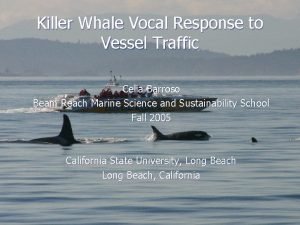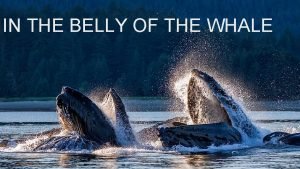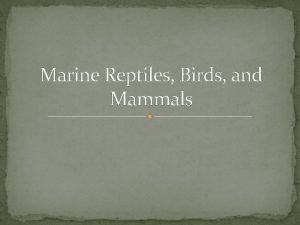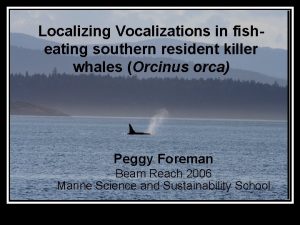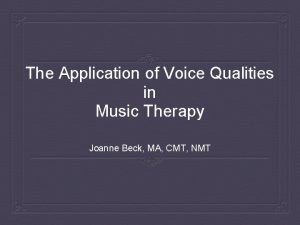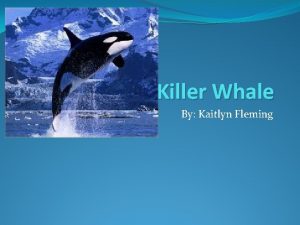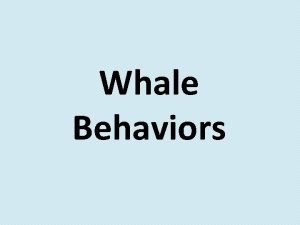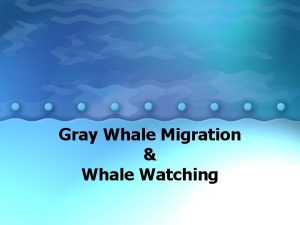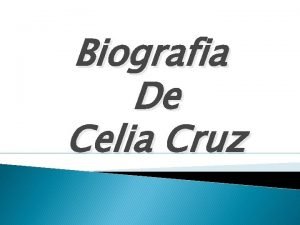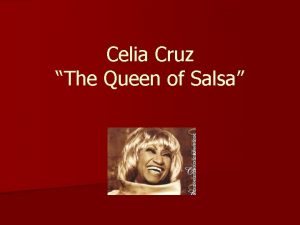Killer Whale Vocal Response to Vessel Traffic Celia












- Slides: 12

Killer Whale Vocal Response to Vessel Traffic Celia Barroso Beam Reach Marine Science and Sustainability School Fall 2005 California State University, Long Beach, California

• Southern resident killer whales (SRKW) declared “depleted” under the Marine Mammal Protection Act • Possible causes according to NOAA/NMFS Conservation Plan: – Pollutants/Contaminants (c. f. PCB, DDT) – Decreased prey availability – Anthropogenic noise pollution

Population Structure and Communication • Different pods (J-pod, K-pod, and L-pod) • Different dialects • Pod specific calls (Ford, 1990) – S 1 (J-pod, K-pod) – S 16 (K-pod, L-pod) – S 19 (L-pod) • Dominant calls

Research that sparked my curiosity • Vessel traffic has increased five fold over between 1990 and 2000 (Foote et. al. , 2004) • During the period of 2001 -2003 all pods exhibited a significant (15%) increase in call duration in the presence of whalewatching vessels.

My questions • Do SRKWs exhibit short-term changes in call duration in response to daily exposure to vessel noise? – Do they modify their calls to avoid masking by boat noise? • Examples: motor , ship , quiet

How did I conduct my experiment? • I attempted to recreate Andrew Foote’s and Richard Osbourne’s published research over a shorter time scale. • We used a hydrophone, amplifier and digital recorder to receive and record the sounds. • Viewed spectrograms of S 1, S 16, and S 19

How did I conduct my experiment? • Calculated call duration of the second harmonics for S 1 and S 16 calls, the third harmonic for S 19 high frequency component and fundamental for low frequency component S 19 Low S 16 S 19 High

What did I find? • The mean I calculated for S 16 calls compares to • the mean S 16 call published by Foote et. al. I did not record S 16 or S 19 calls that were quantifiable using my methods when vessels were absent

What did I find? • Average S 1 call duration in the presence of vessels is 1. 17 s and 1. 105 s in the absence of vessel noise.

What did I find? • No trends

Problems and conclusions • I, unlike Foote et al. , was generally unable to • distinguish which pod I was listening to More observations are needed – – – Observations during peak whale-watching season 24 hr observations Observations regarding activities and call duration • Perhaps SRKWs don’t modify their calls in response to vessel noise

 Killer whale communication
Killer whale communication Is krill an autotroph
Is krill an autotroph Killer whale eating sea lion
Killer whale eating sea lion Killer whale vocalizations
Killer whale vocalizations Old tom the killer whale
Old tom the killer whale Traditional expression of love separation and loneliness
Traditional expression of love separation and loneliness True vocal folds and false vocal folds
True vocal folds and false vocal folds What are the types of serial killers
What are the types of serial killers Incomina
Incomina All traffic solutions
All traffic solutions Natural response and forced response
Natural response and forced response Natural and forced response
Natural and forced response A subsequent
A subsequent
